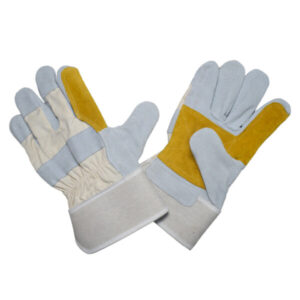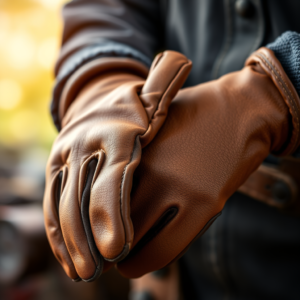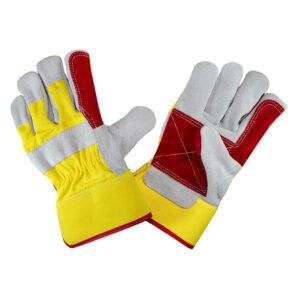
Leather gloves provide protection, comfort, and durability in a variety of professional settings, making them an excellent investment. However, appropriate upkeep and care are necessary to guarantee they last for many years. These suggestions can help you maintain the best possible condition and prolong the life of your leather gloves, whether you’re wearing them for outdoor activities, welding, or construction.
1. Clean Your Gloves Regularly
Dirt, sweat, and grime can accumulate on leather gloves over time, leading to wear and tear. To clean them:
- Use a soft brush or damp cloth to remove surface dirt.
- For deeper cleaning, use a mild leather cleaner or saddle soap.
- Avoid soaking the gloves in water, as this can damage the leather.
2. Condition the Leather
Leather can dry out and crack if not properly moisturized. Conditioning your gloves helps maintain their softness and flexibility:
- Apply a high-quality leather conditioner using a soft cloth.
- Gently massage the conditioner into the leather, focusing on areas prone to dryness.
- Allow the gloves to air dry naturally after conditioning.
3. Store Them Properly
Improper storage can lead to misshapen or damaged gloves. Follow these storage tips:
- Keep your gloves in a cool, dry place away from direct sunlight or heat sources.
- Avoid folding or crumpling the gloves; instead, store them flat or use glove forms to maintain their shape.
- Use a breathable storage bag to protect them from dust and moisture.
4. Avoid Excessive Moisture
While leather is durable, prolonged exposure to water can cause it to stiffen or lose its shape:
- If your gloves get wet, let them dry naturally at room temperature.
- Never use a hairdryer or heater to speed up the drying process, as this can cause the leather to crack.
- Once dry, apply a leather conditioner to restore moisture.
5. Protect Against Stains and Spills
Leather is prone to staining, especially from oils and chemicals. To protect your gloves:
- Treat them with a leather protector or water-repellent spray.
- Wipe off any spills immediately with a clean, dry cloth.
- Avoid using harsh chemicals or solvents that can damage the leather.
6. Inspect for Damage
Regularly check your gloves for signs of wear, such as cracks, tears, or loose stitching:
- Address minor issues promptly to prevent further damage.
- For significant damage, consider professional repair services to extend the gloves’ lifespan.
7. Rotate Your Gloves
Think about keeping several pairs of leather gloves and switching them up if you wear them often. This lessens wear and tear by allowing each pair to rest and recuperate.
8. Use Gloves for Their Intended Purpose
Leather gloves are made for specialized jobs including construction, welding, and outdoor recreation. They may sustain premature harm if used for unexpected uses. Always select the appropriate gloves for the task at hand.
9. Avoid Extreme Temperatures
Leather can be harmed by exposure to extremely high or low temperatures. Avoid leaving your gloves in frigid temperatures or hot automobiles, instead, keep them in a temperature-controlled space.
10. Invest in Quality Gloves
High-quality leather gloves are designed to last longer and withstand tough conditions. Investing in premium gloves ensures better performance and durability.
Properly caring for your leather gloves is essential to ensuring their longevity and functionality. By following these maintenance tips, including regular cleaning, conditioning, and appropriate storage, you can preserve the quality and performance of your gloves for years to come. Remember to use them for their intended purposes and invest in high-quality options to maximize their durability. With a little effort, your leather gloves can remain a reliable asset in any work environment.









